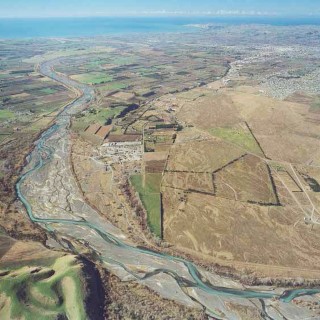
Current filter:

New scientific advice from the Hawke’s Bay Regional Council indicates the effects of current groundwater takes from the Heretaunga Aquifer are at the limit of what is environmentally acceptable.
Hawke’s Bay Regional Council Chairman Rex Graham says it is clear that at the height of summer we are collectively pulling more water out of the Heretaunga aquifer than its streams and rivers can cope with.
The information has been presented to the community stakeholder TANK Group, which is reviewing the way land and water resources are managed in the Greater Heretaunga and Ahuriri area. The area encompasses the Tutaekuri, Ahuriri, Ngaruroro and Karamu catchments ('TANK'), plus the Heretaunga Plains aquifer system. 85% of Hawke’s Bay people live, work, have their businesses and grow food for others on the Heretaunga Plains.
Hawke’s Bay Regional Council Chairman Rex Graham says the latest advice shows the current annual volume of groundwater taken is considered to be at its maximum acceptable level and allocating further water appears to be no longer acceptable.
He says there is currently significantly more water allocated through existing resource consents than is typically used and so constraining water takes to their current actual level of use will likely lead to a reduction in volumes consented to existing consent holders.
“What we are saying now is that the evidence demonstrates we should not allow increased volumes to be taken from groundwater, let alone issue new water consents from the Heretaunga Aquifer. Options may exist to free up some water for further allocation through greater water-use efficiency or through a storage scheme. There may also be scope to allocate more water in the future through augmenting stream flows from groundwater in a manner that reduces the overall environmental impact. All these options are being explored by the TANK Group.”
Mr Graham says further HBRC science advice provided to the TANK Group indicates that all groundwater takes from the Heretaunga Aquifer are ultimately connected to surface water flow. The effect of the takes vary with location, but over time all takes are estimated to have an effect on surface water flows.
“We are all in this together no matter where we are on the Heretaunga Plains.”
He says Council is satisfied that, at the current usage levels, the groundwater is not being used unsustainably as there is still considerably more water entering the aquifer every year providing spring flows and flowing out to sea than is taken for use. However, the current groundwater volumes abstracted over a year have a significant effect on the Ngaruroro River and spring-fed streams and a detrimental effect on in-stream ecology.
Based on the new science HBRC staff will be recommending any new consents for groundwater takes from the Heretaunga aquifer be declined unless applicants can demonstrate that there will be no adverse effects on surface water bodies, particularly the Ngaruroro River, spring-fed streams on the Heretaunga Plains, and on neighbouring bores.
“By law we will still have to receive new consent applications and consider them, but we are giving notice that our internal science advice is that the environmental effects of further takes must be avoided, remedied or mitigated before we can allow any more allocations for water takes. We hope this signal will result in a halt to further consent applications until the new TANK water management framework has been established.”
The TANK Group will soon be developing rules to manage existing takes to ensure environmental effects are appropriately managed or mitigated, and existing investment in water use is accounted for. The Group has signalled its support for an approach to managing the constraint on further allocation and existing use in a manner that does not incentivise a rush for new consents or encourage further water consumption within existing consents simply to increase a consent holders’ historic use.
“Now that we are signalling that the allocation of new water is coming to an end it is important that people don’t try to game the system unfairly for other water users, so we will be looking at recommending a mechanism to the TANK Group that allocates water in the future based on historic use prior to this current winter.”
18 August 2017
Disclaimers and Copyright
While every endeavour has been taken by the Hawke's Bay Regional Council to ensure that the information on this website is
accurate and up to date, Hawke's Bay Regional Council shall not be liable for any loss suffered through the use, directly or indirectly, of information on this website. Information contained has been assembled in good faith.
Some of the information available in this site is from the New Zealand Public domain and supplied by relevant
government agencies. Hawke's Bay Regional Council cannot accept any liability for its accuracy or content.
Portions of the information and material on this site, including data, pages, documents, online
graphics and images are protected by copyright, unless specifically notified to the contrary. Externally sourced
information or material is copyright to the respective provider.
© Hawke's Bay Regional Council - www.hbrc.govt.nz / +64 6 835 9200 / info@hbrc.govt.nz